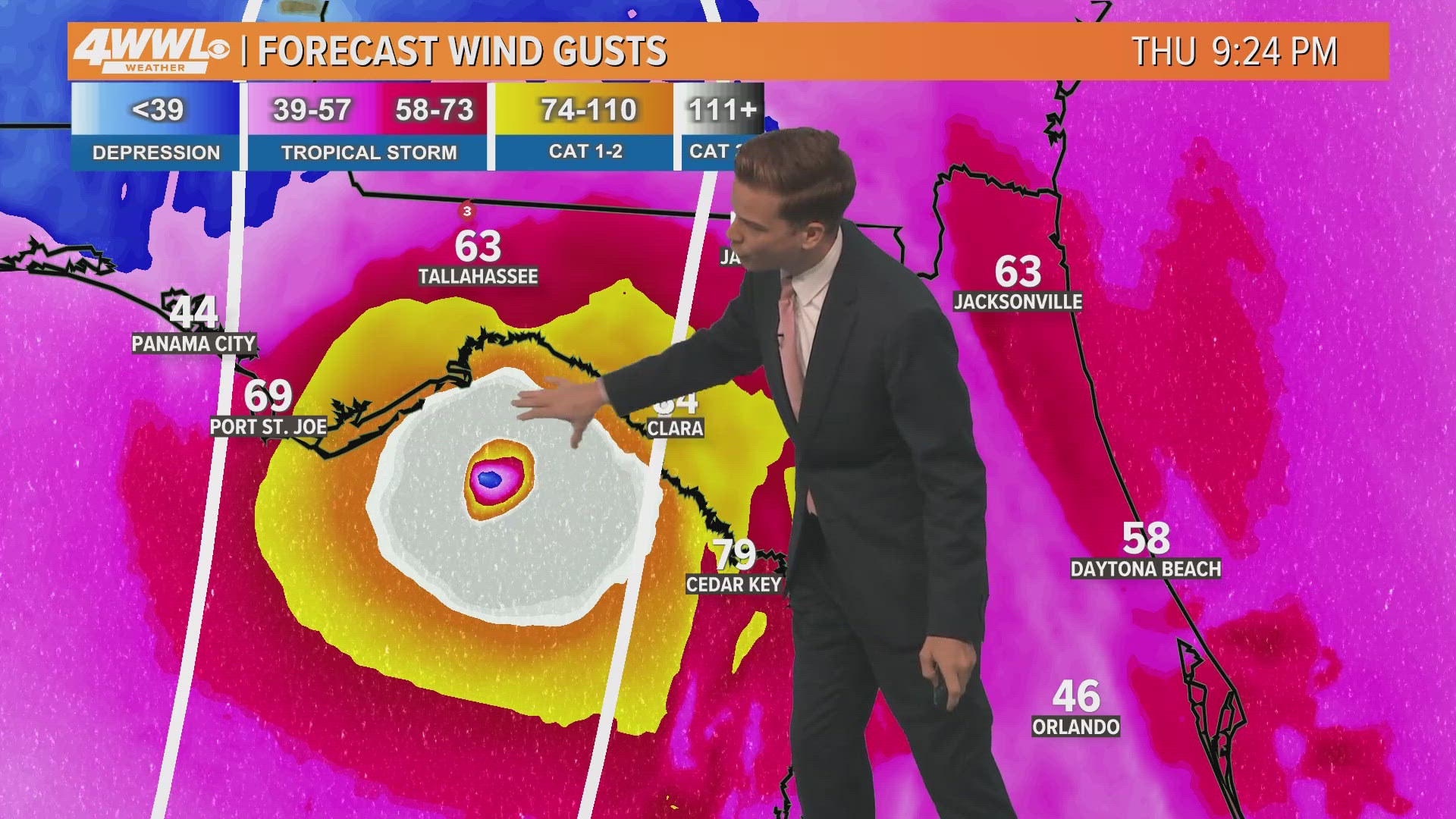SAN JUAN, Puerto Rico — Tropical Storm Helene formed Tuesday in the Caribbean Sea and could strengthen into a major hurricane while moving north toward the U.S., forecasters said. Heavy rains and big waves already lashed the Cayman Islands, and some Florida residents began to evacuate or fill sandbags ahead of anticipated flooding.
Helene was expected to strengthen into a hurricane on Wednesday, and it could become a major hurricane before it arrives on Florida's Gulf Coast as soon as late Thursday. The storm was 145 miles (235 kilometers) south of the western tip of Cuba, had sustained winds of 60 mph (95 kph) and was moving northwest at 12 mph (19 kph).
As the storm approached the Gulf Coast, hurricane warnings were issued for the northwestern Florida coastline and part of Mexico's Yucatan Peninsula, and hurricane watches were in effect for parts of western Cuba and Florida, including Tampa Bay, the U.S. National Hurricane Center said.
Parts of Cuba and Florida's southwestern coastline, including the Florida Keys, were under tropical storm warnings. Nearly the entirety of Florida's west coast was under a storm surge warning.
In the U.S., federal authorities are positioning generators, food and water, along with search-and-rescue and power restoration teams, as President Joe Biden declared an emergency in Florida. Gov. Ron DeSantis also declared a state of emergency for most of the state's counties, 10 of which were urging or ordering evacuations.
The storm is expected to move over deep, warm waters, fueling its intensification. People in regions under watches and warnings should be prepared to lose power and should have enough food and water for at least three days, forecasters warned.
The tropical storm prompted NASA and SpaceX to bump Thursday’s planned astronaut launch to at least Saturday. And Florida A&M University postponed its upcoming college football game against Alabama A&M.
The storm is anticipated to be unusually large and fast-moving, meaning storm surge, wind and rain will likely extend far from the storm's center, the hurricane center said. Georgia Gov. Brian Kemp has declared a state of emergency. And states as far inland as Tennessee, Kentucky and Indiana could see rainfall.
“It’s going to be a very large system with impacts across all of Florida,” said Larry Kelly, a specialist at the center. "Stay up to date with the latest forecast and heed your local officials.”
Hal Summers, a restaurant worker in Mexico Beach, Florida, needed no reminding after he barely survived Hurricane Michael in 2018. DeSantis has said Helene is reminiscent of that Category 5 hurricane, which rapidly intensified and caught residents off guard before plowing a destructive path across the western Florida Panhandle.
When it hit, Summers waded with his cat in his arms as waters began rising rapidly in his parents' house. Their house and his home were destroyed.
“That was such a traumatic experience that that is not the place I needed to be for myself,” he said Tuesday as he evacuated with a friend to Marianna, a town farther inland.
If Tropical Storm Helene follows the same path as two recent hurricanes, Florida will have a quicker recovery, Jimmy Patronis, the state's chief financial officer, said Tuesday. Hurricane Idalia, which hit Florida in August 2023, and Hurricane Debby, which came ashore last August, took down vulnerable structures and trees that would have caused debris, he said.
Helene, the eighth named storm of the Atlantic hurricane season that began June 1, could strengthen into a major Category 3 hurricane — with winds of at least 111 mph (178 kph) — before approaching the northeastern Gulf Coast. Since 2000, eight major hurricanes have made landfall in Florida, according to Philip Klotzbach, a Colorado State University hurricane researcher.
The sun shone Tuesday in Tarpon Springs, Florida, but residents already filled sandbags as they braced for potential flooding.
Officials in the Cayman Islands closed schools, airports and government offices as strong winds knocked out power in some areas of Grand Cayman, while heavy rain and waves as high as 10 feet (3 meters) unleashed flooding. Authorities urged people to stay indoors as the storm moved away later Tuesday and said crews would soon fan out to assess damage.
Many in Cuba worried about the storm, whose tentacles are expected to reach the capital of Havana, which is struggling with a severe water shortage, piles of uncollected garbage and chronic power outages.
Helene was expected to slip between Cuba and Mexico’s Yucatan Peninsula early Wednesday and drench the area with up to a foot (30 centimeters) of rain, before heading north across the Gulf of Mexico. Heavy rainfall also was forecast for the southeastern U.S. starting Wednesday, threatening flash and river flooding, according to the National Hurricane Center.
Large storm surges of up to 15 feet (5 meters) were expected for a wide swath of the northwestern Florida coastline.
The National Oceanic and Atmospheric Administration has predicted an above-average Atlantic hurricane season this year because of record-warm ocean temperatures. It forecast 17 to 25 named storms before the season ends Nov. 30, with four to seven major hurricanes of Category 3 or higher.
In the Pacific, former Hurricane John killed two people after it barreled into Mexico’s southern Pacific coast, blowing tin roofs off houses, triggering mudslides and toppling scores of trees, officials said Tuesday.

